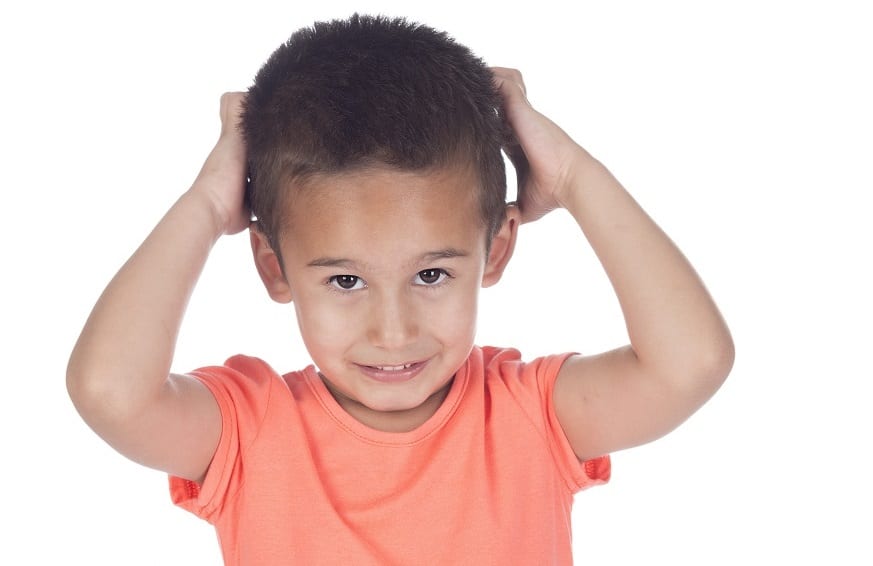Impetigo “School Sores”
1. General Information
Impetigo is a highly infectious skin infection that is more commonly referred to a “school sores”. It is most commonly cause by one of two bacteria, staphylococcus aureus or group , β-haemolytic streptococcus.
These bacteria can normally live on the skin, in the throat or nose, or on other parts of the body without causing a problem but sometimes they start to cause an infection such as impetigo. Impetigo can occur on healthy skin, or on skin already “broken skin” e.g. due to a scratch or an insect bite. Impetigo is more common in the summer months.
2. Signs and symptoms
The sores usually develop on sores usually develope under the nose and on the face, but can also occur on the arms and legs. The sores usually start as itchy red blisters which then burst leaving red and weeping skin. This area usually then becomes covered with a yellow “honey” colored crust.
Most children find Impetigo to be itchy; scratching these lesions helps spread the infection to other parts of the body and to other children. This is especially important as the sore fluid and the crust of the sores contain the bacteria.
The sores usually develop 1-3 days after exposure to the infection, and is infectious as long as its weeping.
3. Treatment
Impetigo responds well to a range of treatments, but it’s important for the child to be seen by a Medical Doctor.
Wipe the crusts off the sores, and adhesive dressings maybe needed to stop the child scratching the sores. Antibiotics are usually needed and may take the form of topical antibiotics (ie applied to the sores), and oral antibiotics. It’s not uncommon that the Medical Doctor will need to prescribe a course of antibiotic ointment delivered into the childs nostril. The bacteria that cause impetigo often live in the nostrils, and children have a habit of picking their nose, making it easier to spread the infection.
Your child is no longer infectious after the crusts are removed and the sores stop weeping, usually this is 24 hours after treatment has begun. Impetigo is very infectious.
Threadworms “worms”
1. General Information
Threadworms are long slender roundworms, which commonly cause infections in school aged children and amongst families. They live in the lower intestine, but move to the buttock region in the early hours of the morning to lay their eggs. This creates an annoying itch.
Threadworms are spread by children scratching their bottoms and carrying the worm eggs on their hands which are then transferred to other children’s mouths via general day to day childhood interactions and play.
2. Signs and Symptoms
Threadworm infection is not a serious medical problem, but it can create a very annoying itchy bottom, especially at night, which can interrupt the child’s normal sleep patterns.
3. Treatment
Your Medical Doctor will be able to advise the best treatment, but usually medications such as Pyrantel (Combantrin) and Mebendazole (Banworm) are highly effective. It is generally advisable to treat all family members at the same time as threadworms can be very easily spread. Medical advise should be sought before giving these medications to a child under 2 years of age and to a pregnant mother.
Head Lice and Nits
1. General Information
Head lice and nits are very common. They are unpleasant, but not a serious health risk. Head lice are very small, wingless insects, about the size of a sesame seed. They live on the scalp of human heads where they feed by sucking human blood. They cannot fly or jump so the only means of catching head lice is by direct contact. Nits are the eggs laid by the head lice. Nits stick to individual hairs, close to the scalp. They remain attached to the hair even after the eggs have hatched.
Head lice are not related to hygiene – they live on all types of hair and all sorts of people. Head lice cannot live on cats, dogs, other pets or carpets or bed linen. They can only survive for a short time away from the human scalp, so catching them from hats or other clothing is very unlikely.
2. Signs and Symptoms
Itching and scratching is an indicator but not a sure sign of head lice. The best places to look for head lice and nits are close to the scalp, behind the ears and at the back of the neck. The best way of finding (and removing) head lice is by putting hair conditioner on to hair, combing though with a fine-toothed head lice comb, then wiping this on paper towel.
3. Treatment
Head lice are easy to treat and don’t necessarily need a visit to your Medical Doctor. Safe chemical head lice treatments are available from chemists. The head lice shampoos may need to be repeated weekly until the lice completely disappear. Never use other insecticides, pesticides, or kerosene as they are ineffective and unsafe.
A/Prof David Coman MBBS MPhil FRACP
Medical Director of Paediatrics
The Wesley Hospital
Academic Lead for Paediatrics, United Care Health Clinical School
Ph 0733715122
www.drdavidcoman.com.au
www.facebook.com/DrComan
This article was published in Issue 5 of our print magazine, August/September 2014.



Nits are not easy to pick off whereas dandruff comes straight out. As much as possible, require stay not in the solutions including toxic pesticides like lindane. At school interaction within children could be observed. Lice Removal, 100 Church Street Decatur, GA 30031 (770)-645-4548